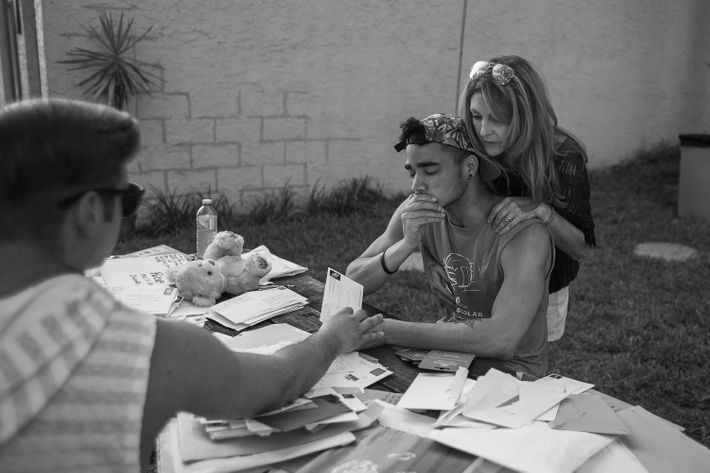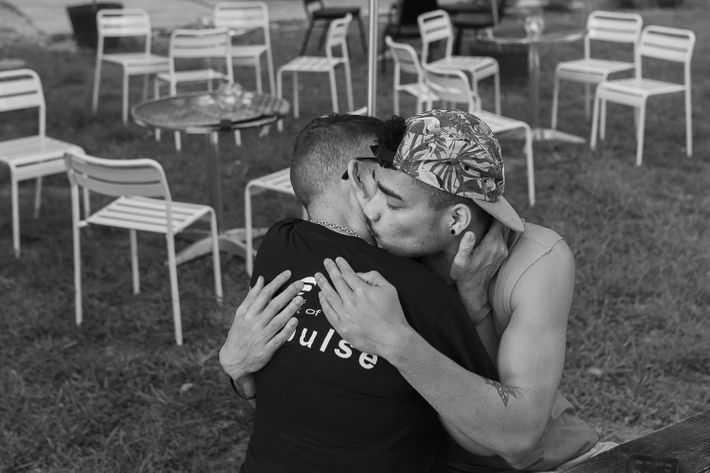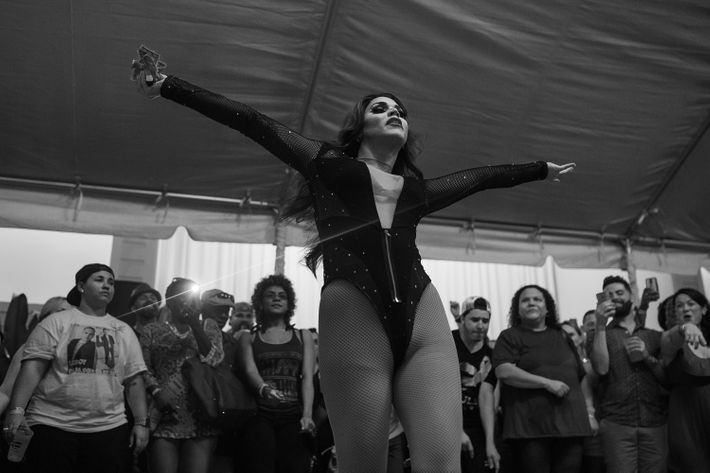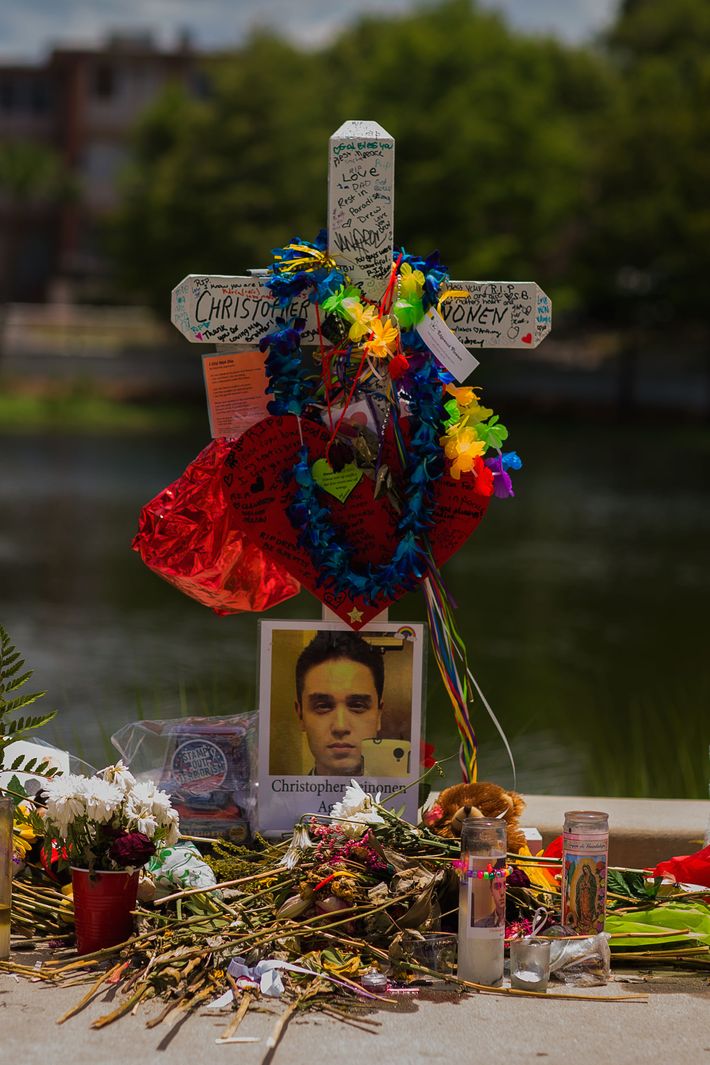
Long before the June 12 massacre, the Orlando club Pulse was a kind of second home to its regulars, many of whom often thought of each other as family. In the days after, the club became even more so — a community of support and collective grief, staging impromptu vigils and memorials, rallies, and more-casual get-togethers designed to protect and nurture one another and make sense of the tragedy that hit the club so many considered home. On Wednesday, a former Pulse performer opened up her private theater for a gathering of the inner circle. On Thursday almost 2,000 came together at Pulse’s sister bar for a fundraiser, benefiting PulseofOrlando.org, organized by club owner Barbara Poma. “Latin Night for Pulse.” Drag queens performed for the first time since the shooting, a circle forming around them, and people wept and hugged as DJs spun the sort of tracks that delighted so many on Pulse’s Saturday Latin Nights.
Photographer Andres Kudacki spent those days in Orlando, and Alexa Tsoulis-Reay spoke to several members of the community about life in the aftermath of the massacre.

“I was working outside on the patio when the first round of shots came. I thought it was the DJ — he had done something similar earlier on. But this was louder, and it wasn’t the same beat. Then the second round came, and everyone started running. I went behind the bar, then looked up and saw the emergency door latch was open, so I ran to Dunkin’ and hid behind a car.
I lost two friends, Drew and Juan. They first met at Pulse, which is rare: a couple that actually lasts after meeting at a club! They had gone to SeaWorld that day to catch the new ride — the shark one. I was with them before work, and we were supposed to hang out after my shift. I saw them while I was working and I’d smile at them. The last thing Drew said was, ‘See you at three.’
I got the tattoo six days ago. My friend showed me the design as he was taking me home from a fundraiser. I saw other people getting tattoos, too — a tattoo artist has been doing many that relate to Pulse, donating the proceeds. This one felt right.
Pulse was the first gay club I ever went to. We would go on holidays: Christmas, Halloween and the Fourth of July. It was our way of having fun, being ourselves without judgment. This was when I was coming out, and that was a long process for me. It actually made me sick from all the stress. But that’s another story. Pulse was the first place I felt more comfortable. We all knew each other there. For me it just felt right.” —Johnathan Amaya, barback

“I’ve been talking to a lot of the survivors and someone said to me, ‘I have never experienced death before, I have never had someone close to me die, and this week I will be going to five funerals.’ This puts it into perspective: The demographic at Pulse — they were younger, they were kids.
I’m a retired ballet dancer—I’m known in the community as the ‘female drag queen,’ the honorary drag queen. That’s a big title! I might have danced at some of the biggest theaters in the country, but the title ‘honorary drag queen’ at Pulse is high praise.
I went on opening night. It was 12 years ago, and it was a very big thing for Orlando — another place in another part of town where people could go and celebrate and dance and be free. That was very exciting. And I watched it evolve: It became a home for so many of us. The wound is so deep. The cut is so deep. We have stopped asking ‘How are you?’ Instead we say ‘Good to see you.’ We are. We just are.” —Blue Star, performer

“I’d only been on staff for nine months, but I have been going there forever. I just found a picture of me there from ten years ago — a group of us went and celebrated my friend’s 21st birthday. We all go years and years back. We call it home.
Everyone felt at home there. It is a special place. Kids just came in and did their thing. It wasn’t the big names in the drag industry, it was just anyone. Someone would do a song, some burlesque, do their thing. Drag kings from different states, and always a lot of people from overseas. I’d say, ‘How do you know about Pulse?’ They’d say, ‘We googled it up!’
When I started working there, I was welcomed with open arms. [Club owner] Barbara’s just one of the most amazing people I have ever met — she’s our rock, for sure. The way our community has come together, it restores your faith in humanity after such tragedy.
But we are all in shock. A couple of us went by yesterday and said our prayers. It’s so surreal. It’s heartbreaking. I am sure in the future I will wrap my head around the politics and the larger questions, but we need to heal right now and help the family heal.” —Cathy “Binks” Binkewicz, bartender








*A version of this article appears in the June 27, 2016 issue of New York Magazine.





























